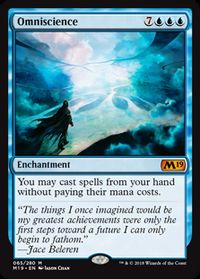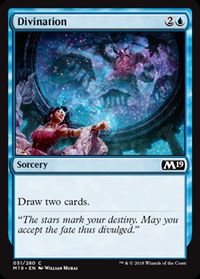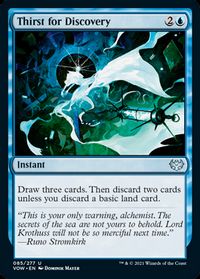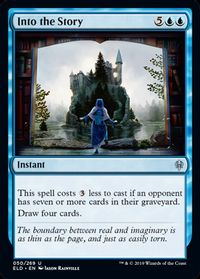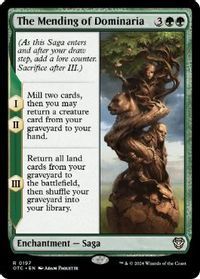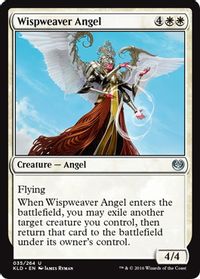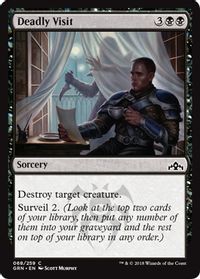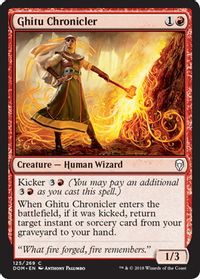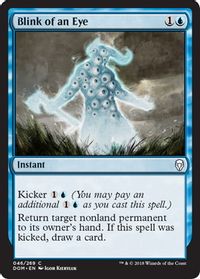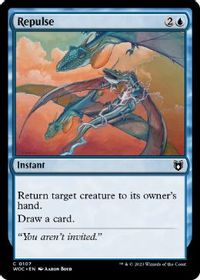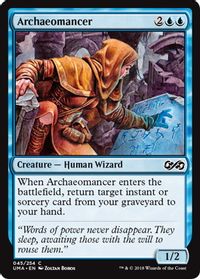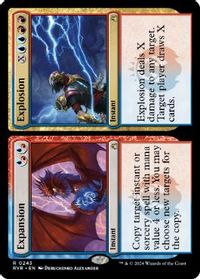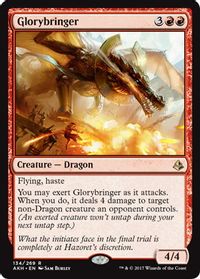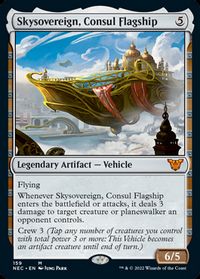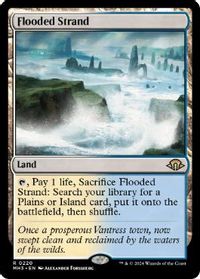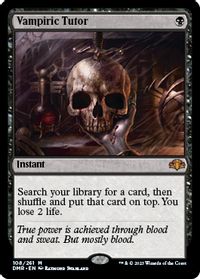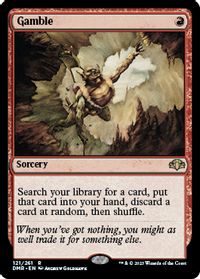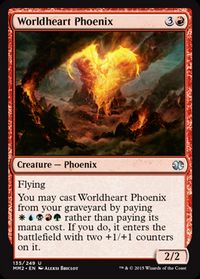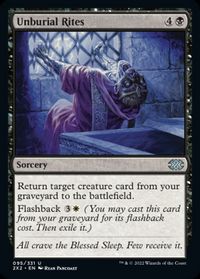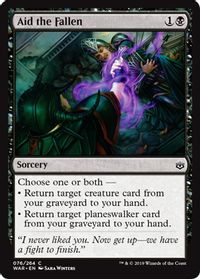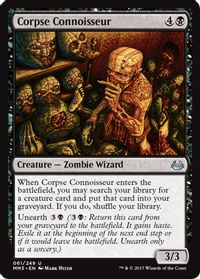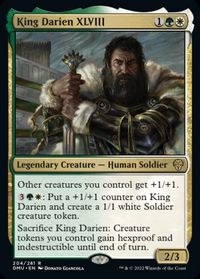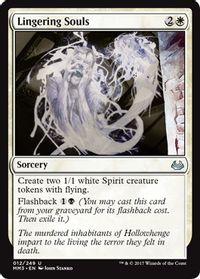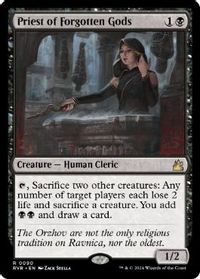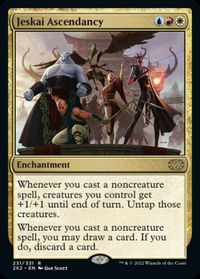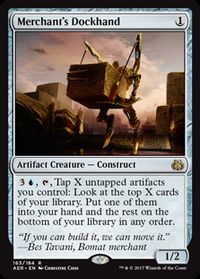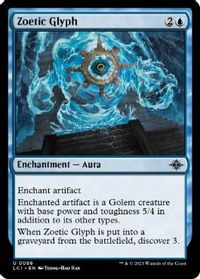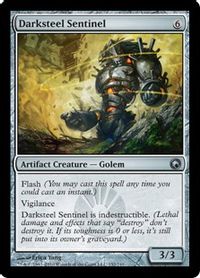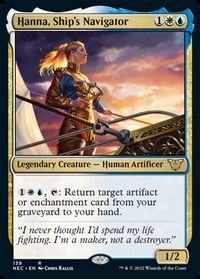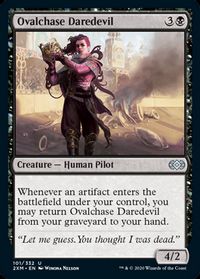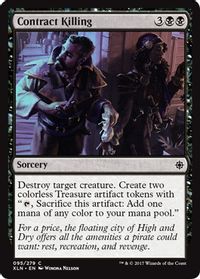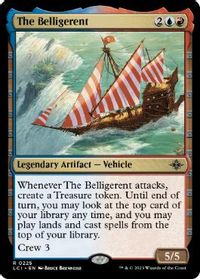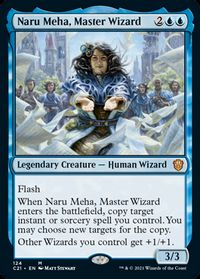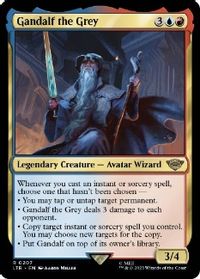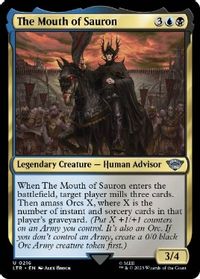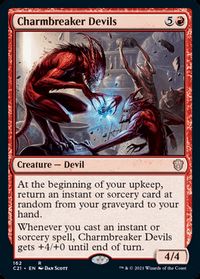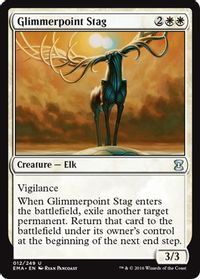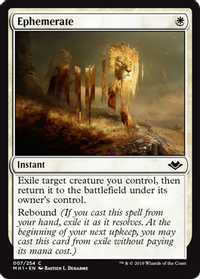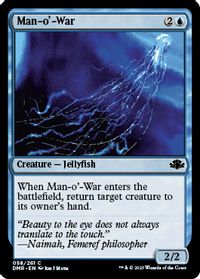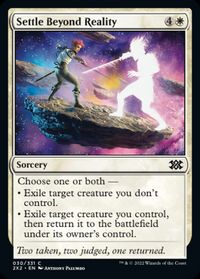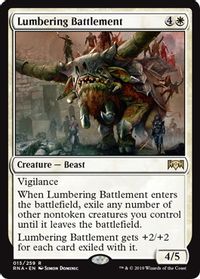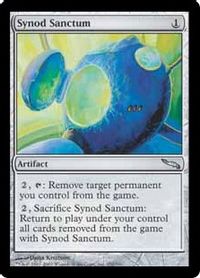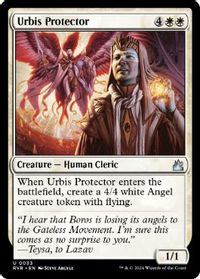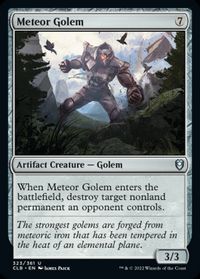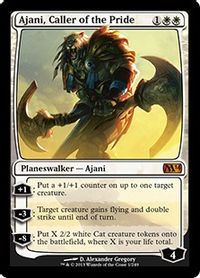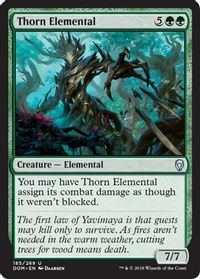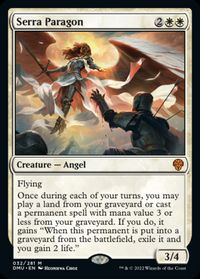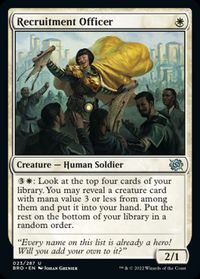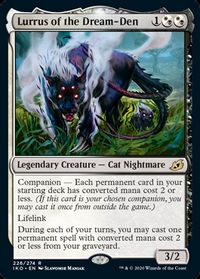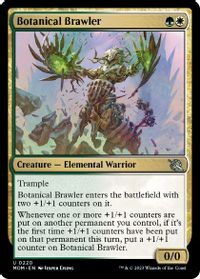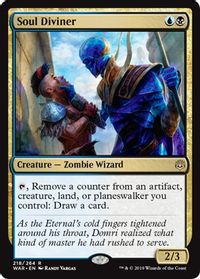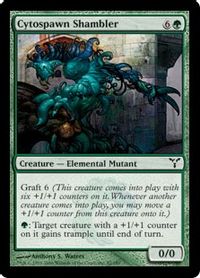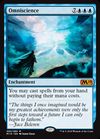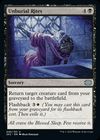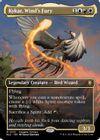Introduction
One of my favorite ways to enjoy Magic in recent years has been the occasional 《Omniscience》 Draft on MTG Arena. The concept is simple: each player starts with an 《Omniscience》 emblem in play and is thus able to cast spells for free from their hands. Each player can also add one mana of each color to their mana pools once a turn to pay for additional costs and activated abilities.
This radical shift redefines the usual constraints of Magic gameplay. When mana costs and color requirements are no longer a limiting factor, the rates of cards no longer matter, only their effects. The format forces you to think about Magic from new angles and to re-evaluate many conventional wisdoms.
For example, card draw spells become incredibly valuable, and if you happen to get a good opening hand with enough card advantage you can sometimes go through your entire deck on turn 1.
However, there is one big problem with playing the format on MTG Arena. When card draw effects are too abundant and uncontested by the bots you’re drafting with, it can become too easy to combine them into turn 1 kills. This leads to a significant amount of games where one of the players never gets to make a meaningful game action, which ruins some of the fun that the format has to offer.
Making matters worse is that you’re forced to play almost all of your picks (40/45) and that the format is usually played with 3-card opening hands. The last cards in the packs tend to be close to useless in Omniscience Draft, which inevitably results in some bad opening hands and thus also one-sided, unfun games.
This led former Hareruya Hopes Leo Lahonen and I to the following question: What would happen if you designed a Cube around the Omniscience Draft concept? Could you capture the unique upsides of the format while eliminating the downsides?
You can check out our current version of the cube here.
Design Principles for Omniscience Cube
Build Your Own Divinations
The first thing we discussed with Leo was that decks should feel like they do powerful and fun things, but they shouldn’t be too powerful. Once the Cube was built, a friend of ours described it as a “Build-your-own-Divinations” Cube, which I felt was a good way of putting into words what we wanted to achieve.
Specifically, we wanted players to not be able to go off and draw their entire decks too easily, which meant that card draw in particular shouldn’t come too freely. There would be a very minimal amount of easy, guaranteed card advantage – if you wanted it, you would have to work at least a little bit to get it.
The closest thing to a 《Divination》 is 《Memorial to Genius》, which eats up your mana, comes into play tapped, and is harder to abuse than other card types.
However, there are many more ways to create card advantage without directly drawing cards. For example, 《The Mending of Dominaria》 can net you an additional card, but it hits only specific types of cards and acts on a delay. 《Wispweaver Angel》 can also provide card advantage, but only if you have something good to blink with it. 《Deadly Visit》 can produce value by surveilling a flashback card to the graveyard.
Little streams like this can add up to players building resources, getting to do things that feel powerful and having lots of meaningful decisions without enabling broken decks that kill on the first turn of the game. When the card advantage engines require different synergies to work, the drafting phase is more dynamic and decks end up with distinct identities.
Create Choices
That leads us to another downside of the card 《Divination》 itself: having no restrictions means that it’s going to be good in every OmniCube deck ever, and it doesn’t lead to any significant decisions. That makes it a very boring card in this context.
Another way to increase the amount of choices is to add focus on resources that players are restricted by. I find it funny that maybe the clearest example of this in the OmniCube format is actually focusing on mana.
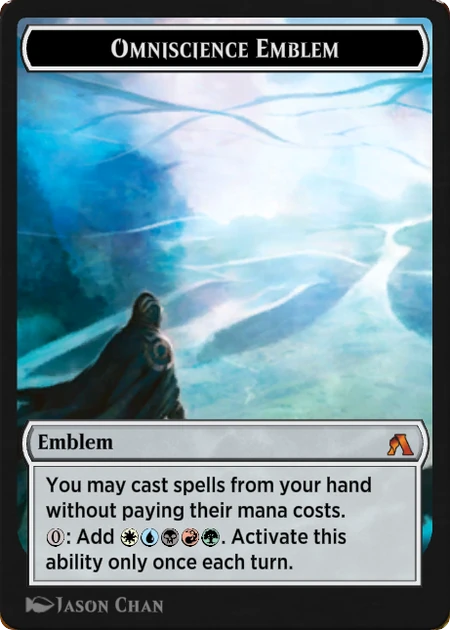
While the 《Omniscience》 emblem lets you cast spells for free, it doesn’t help in activating abilities or paying additional costs. If you have multiple cards with activation costs, or multiple cards with kicker, you have to choose which ones to spend your limited amount of mana on.
This principle is clearly visible in some individual card choices, like including 《Ghitu Chronicler》 and 《Blink of an Eye》, but not 《Repulse》 and 《Archaeomancer》. Not only do the kicker versions of these cards lead to more choices in the games, but they also prevent the decks from becoming too powerful and going off too easily, since the kickerless versions form a two card combo that immediately draws your entire deck.
There are many cards in Magic’s history that have similar but slightly different effects, just like 《Repulse》 and 《Blink of an Eye》. You don’t want the cube to be cluttered with cards that are too similar to each other, so in these cases we prioritized the ones that would lead to the most interesting decisions in both drafting and game play.
Another way to make mana matter are cards like 《Expansion/Explosion》: the front side is playable but not exciting on its own, but the back side is a powerful payoff that incentivizes you to find ways to create additional mana.
Prioritize Recognizable Cards
When opening up a pack of cards in a Cube draft, it’s a lot easier to mentally parse the contents of the pack if the cards are ones that you’re already familiar with, or at least easily recognizable. Prioritizing iconic cards makes the Cube much more accessible and fun to players who haven’t played that particular Cube before.
While this applies to all other Cubes as well, I find it particularly important in OmniDraft, as you can’t even put your “blinders on” and ignore cards that aren’t in your colors. If you have to read every card in the draft, it quickly becomes tedious instead of fun.
The amount of text on the cards also factors into this. If a card is elegant and simple in design, taking in the information doesn’t take long. One good practice is to consciously avoid cards with either irrelevant text or confusing phrases, even if they might otherwise fit the Cube.
For example, I would avoid adding something like 《Defiler of Instinct》, since half of the text box is spent on an ability that doesn’t actually matter.
No Tutors
Another clear rule we wanted to have was not including any tutor effects, unless they are for a very good purpose. Tutor effects simply take a lot of time as the players first need to go through their decks and then shuffle the decks afterwards.
I think banning fetchlands in Pioneer right at the inception of the format was one of the best ban decisions Wizards of the Coast has ever made, and we wanted to apply a similar principle here.
There are currently a couple of exceptions to the rule, but it’s at least good to minimize the amount of those cards even if they’re not completely banned.
Archetypes of Imagination
The next step in creating the Cube was choosing archetypes for it. Sometimes Cube designers start with the identities of color pairs and work their way forward from that, but that approach does not work at all in a Cube where anybody can cast any card.
An additional difficulty comes from the fact that in OmniCube the cards need to belong to a relatively narrow range in power level. Tribal synergies, for example, don’t tend to make any sense, since most of the tribal cards are simply too weak – or in the case of the Eldrazi, too powerful.
This part of building the Cube is hard “work”. We have spent a whole lot of hours scouring through lists of cards trying to find ones that would fit the Cube. Once you have some archetypes in mind, you can do targeted searches for specific keywords and card types to find candidates, but there will still be a ton of cards to go through.
You should also try to
Here are some themes that we eventually settled on, some of which contribute to whole archetypes, and others that form smaller pockets of synergy within decks.
Graveyard Recursion and Self-Mill
One of the easiest ways to create card advantage without actually drawing cards is letting the players recur cards from their graveyard. Recursion is a naturally slow way to build resources and doesn’t contribute to the problem of going through your deck in one turn, so it’s ideal for this purpose.
A logical pairing for graveyard recursion, flashback and so on, are cards that put other cards in the graveyard.
One of my favorite things to do in the Cube is tutoring up a 《Worldheart Phoenix》 with 《Corpse Connoisseur》. Talk about value!
Go Wide / Tokens
Going wide is also possible, but a little bit different than in other formats. Many token makers create a few copies of small tokens, which is simply not a powerful enough thing to do in this format. Token makers in OmniCube have to either create bigger tokens than usual, tokens with abilities, be repeatable effects, or have some other form of synergy.
Payoffs for the token theme often include being able to sacrifice the tokens for some kind of benefit instead of mass pumps.
Artifacts and Enchantments
Another clear choice for an interesting theme was artifacts, and to a lesser extent also enchantments. There are a lot of artifacts and many artifact payoffs printed over the years, so there’s plenty to choose from.
Note that this theme can easily overlap with the previous two: 《Whirler Rogue》 and 《Precursor Golem》 go in the token theme as well, and 《Ovalchase Daredevil》 and 《Hanna, Ship’s Navigator》 work well together with self-mill.
Cards that create Treasure tokens serve multiple purposes here as they can both boost the artifact synergies and enable cards that have costs that can’t be otherwise paid for.
Instants and Sorceries
“Spells Matter” is a classic theme across Magic formats. As a deviation from the norm though, in OmniCube this theme can’t rely much on cards that say “Draw a Card”. Cantrips that would support this archetype would be great in every other deck as well since there is practically no cost in playing them, and thus we had to look a bit harder for thematic cards that would work well here.
The good news is that many of the interactive spells in the Cube are incidentally instants and sorceries, which means that you can pair the proactive payoffs with cards that disrupt your opponent and prevent them from progressing their own game plan.
Many of the payoffs for instants and sorceries also overlap with other themes. 《Jeskai Ascendancy》 was already mentioned in the go wide section, and cards like 《The Mouth of Sauron》 and 《Charmbreaker Devils》 benefit from being played alongside graveyard recursion and self-mill.
Enters the Battlefield
Repeatedly triggering enters the battlefield effects is also another nice way to create value without drawing cards. Cards like 《Glimmerpoint Stag》, 《Aether Tradewinds》 and 《Ephemerate》 can boost many kinds of synergies. These cards can be a little bit dangerous though, because some of them might enable combos that are too powerful.
For example, 《Archaeomancer》 can go off very easily with the bounce spells, and 《Man-o’-War》 bouncing itself can give you infinite triggers from other cards for free, like 《Hazoret’s Monument》. Each half of these combos can be very innocuous on its own, but you have to be careful not to include both of them in the Cube.
One of the upsides of this theme is that it ties in very well with the other themes and it’s easy to find overlap. There are, for example, many token makers and artifacts with enters the battlefield triggers.
Size Matters
We’ve also tried some themes that didn’t play out as well as we thought they would. One of them was big creature beatdowns, which was basically meant to be this Cube’s version of an aggro deck. The idea was that you could try to force big creatures through and win a game that way, without focusing on synergies of the other themes. Some cards that belonged in this category were 《Gravitic Punch》, 《Ajani, Caller of the Pride》 and 《Angelic Gift》.
There was one big problem with this theme though: it was simply not fun. If the big creatures had useful abilities, they would be too powerful, and if they didn’t they would be boring. Cards like 《Gravitic Punch》 were also very hit-or-miss: either it does nothing, or it ends the game on the spot. Neither outcome would result in a fun game.
Some of the cards are still left in the Cube because they can be nice on their own, but support for the overarching theme was dropped.
However, thinking about big cards led us to think about a much more fun challenge: how to make small cards matter. With 《Omniscience》 in play, it’s easy to make casting expensive cards rewarding. But how do you reward players for drafting cheap cards?
Turns out there are a few ways to do that as well. 《Serra Paragon》 rewards you for having cheap permanents in your graveyard and 《Recruitment Officer》 churns through your deck to find them. Unlike expensive cards, cheap ones can also be cast off things like 《Vivien, Champion of the Wilds》. (Note that you need to pay the actual mana cost for the cards in exile).
Counters
Another theme that didn’t go very far was a “Counters Matter” theme that included cards like 《Incremental Growth》 and 《Botanical Brawler》. Some of the issues here were finding cards of appropriate power level, and especially finding overlap with the other themes. Pursuing the theme didn’t feel like enough of a reward.
Some of the individual cards from this theme are also still remaining, as they were individually interesting enough, and there are incidental ways to support them.
Be the Change You Want to See in the World
The last step in building a Cube is one that never ends: tuning it. One of the best parts about building your own Cube is that if there’s something you don’t like, you have the power to change it! As you keep playing with your cards, you get more data on what works and what doesn’t and you can keep updating the card list in whatever ways you want.
It’s often a good idea to not only learn from your own games, but to also ask feedback from the friends that you’re playing with. With OmniCube, for example, it’s important to gauge the power level of the cards so that the themes would be roughly balanced and the games can be fun for all parties involved.
The following questions are good conversation starters to help you improve your Cube:
●Did any cards stand out as slam dunk pick 1s? Did some cards win games by themselves?
○Both of these are signals of cards that might be too good.
●Are there cards that always end up as the last cards in the pack?
○If no one wants a card for their deck, it might be too weak.
●Which archetypes keep winning?
○If you draft with 8 people and the same kinds of decks win every time, it’s a sign that the archetypes aren’t properly balanced.
●Were there any hit-or-miss cards?
○For example, we cut 《Thought Distortion》 from the Cube because we found it to lead to unfun games – sometimes it won the game single-handedly on the play, and other times it did absolutely nothing on the draw.
OmniCube is such a different environment from normal Magic that it can be hard for some players to adjust to it, but personally I’ve been very happy with drafting it and the games have been a lot of fun. If you’ve liked the Omniscience Drafts on MTG Arena, or are interested in Cubes with unique rule sets, I recommend giving it a try.
I think Leo and I have done a good job of addressing the issues of the original Arena format without inducing too many new ones. Shaving both the most powerful cards and the weakest cards leads to the games being a lot more balanced and interactive.
Compared to regular Magic, the games are also very action-packed since the players start doing powerful things right from turn 1, and the decks consisting only of spells means that neither player will suffer from mana screw or flooding out. Overlaps between the archetypes also makes the drafting portion feel dynamic and lets you use your creativity in combining cards in new ways.
Hopefully this article shed some light on how to build a Cube based on a novel concept. Maybe you can even use the lessons learned here to build your own!
Until next time,
Matti Kuisma (X)



